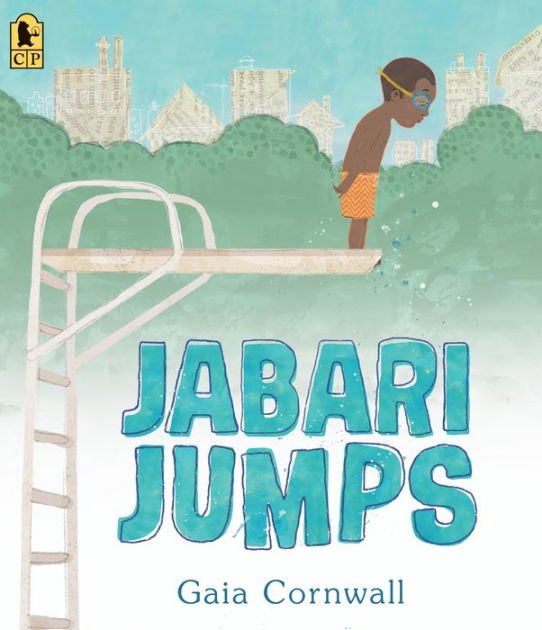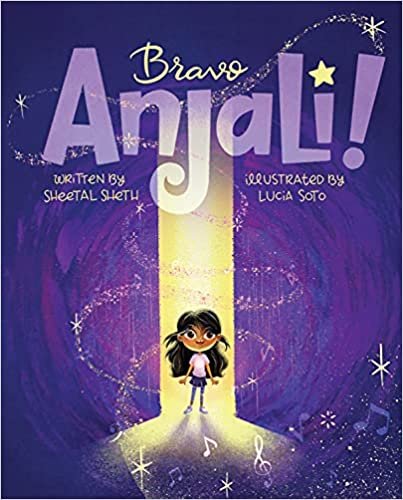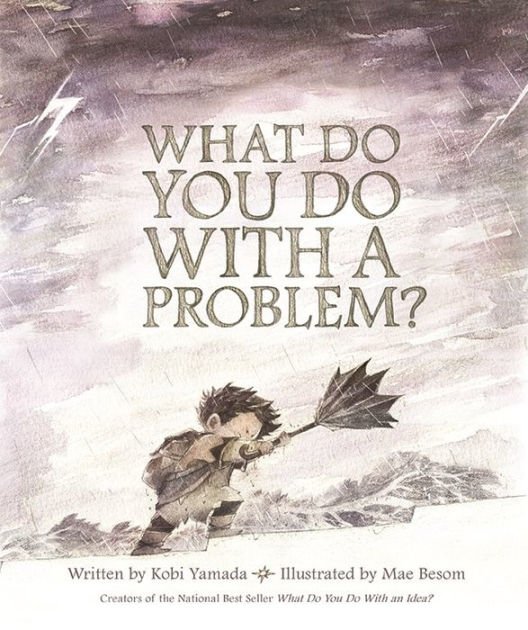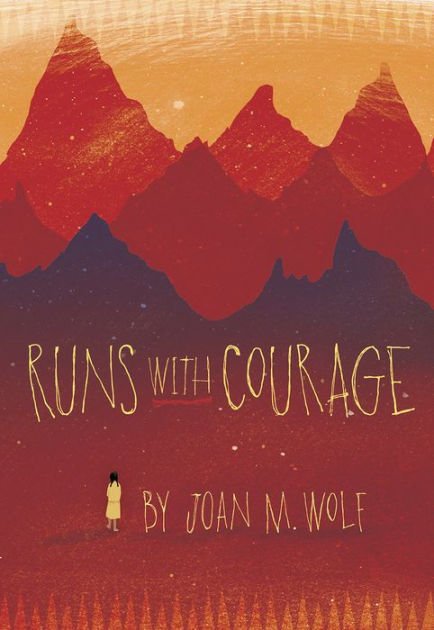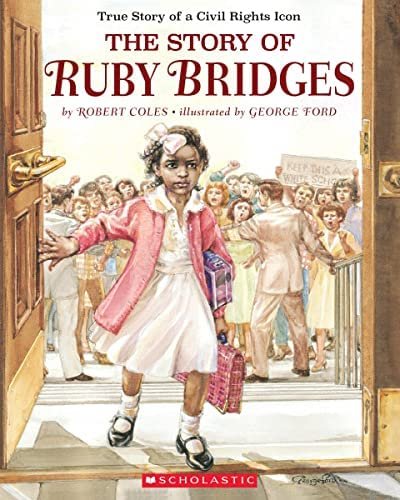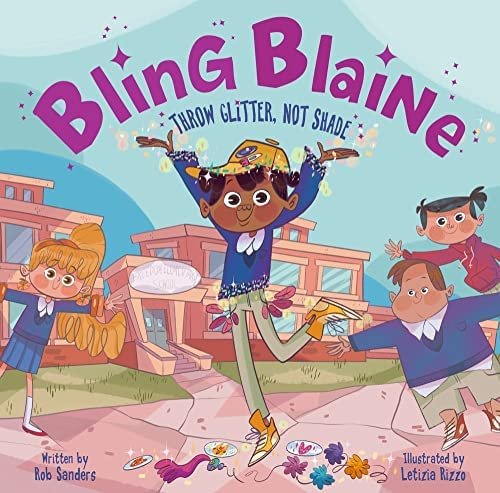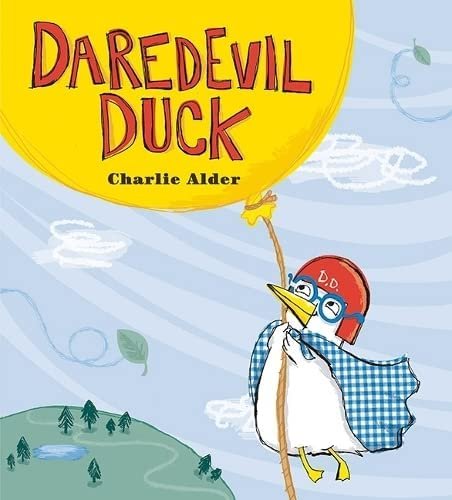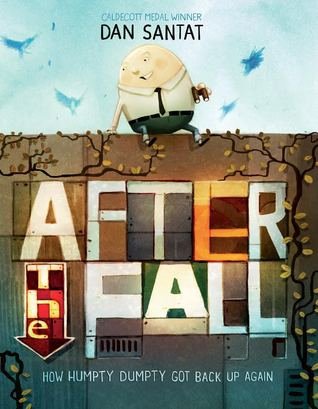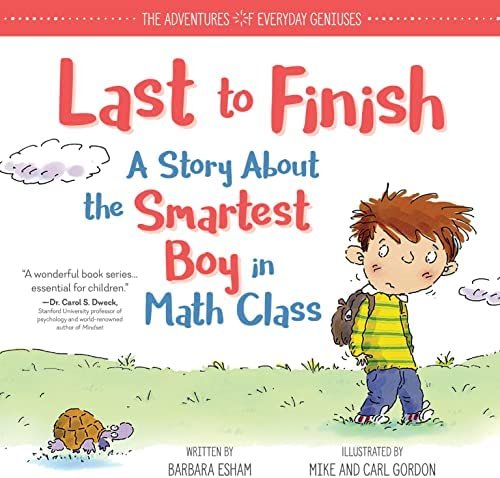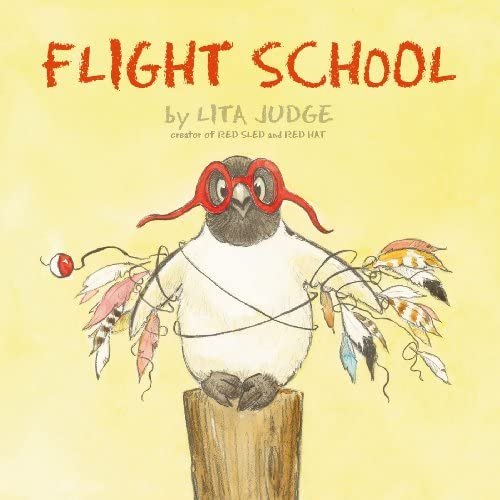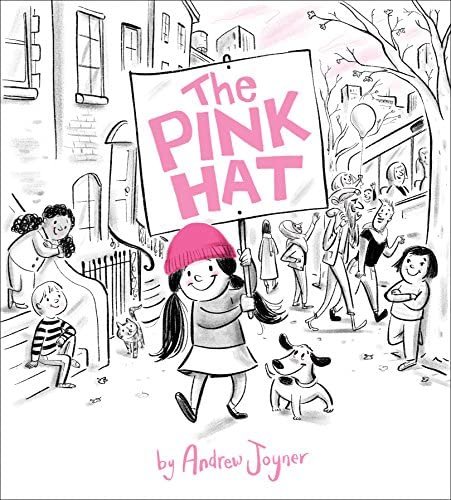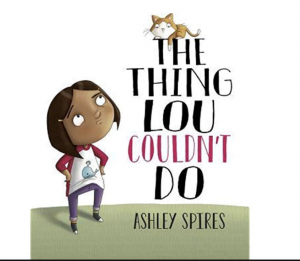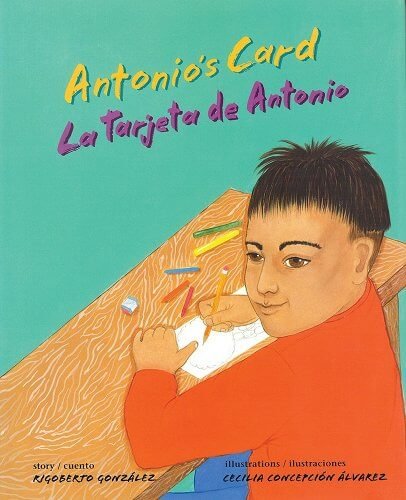Interview: transition and change
Nature can be our greatest teacher
They say March comes in like a lion and goes out like a lamb. As it straddles the winter/spring season, this month is filled with transition and change.
I spoke with Jacalyn Warshauer whom I met back in 2012 when she taught for Yogi Beans. Since that time, Jacalyn and I both became mothers to our own Beans. Jacalyn opened up Wild Type Learning, a therapeutic learning experience for children and families to actively awaken their senses, strengthen the mind, body & heart connection and tune into the wisdom of nature. Enjoy our conversation!
Jacalyn has found her inspiration to create Wild Type Learning from a passion to support young children and families; her love and connection to our natural world; the awareness to the importance of fostering a strong connection to mind, body, and heart; and a growing understanding of the true needs of the “whole-child” through the relationship with her two sons.
Learn more at wildtypeacres.com
Find Sonjoria on Instagram @wildtypelearning
Teaching children about diversity and inclusion
Empower children to cultivate empathy for others
Teaching Children About Diversity and Inclusion
As parents, caregivers, and teachers, many of us are looking for ways to engage children in discussions around diversity and inclusion. Speaking openly and positively about peoples’ differences can empower children, and help them cultivate empathy for others.
In simple terms, we can think of diversity as the differences between us (i.e., in race, gender, religion, disability, etc.). Inclusion, on the other hand, comes from creating an environment where everyone, regardless of their differences, feels welcomed and accepted. When diversity and inclusion are modeled by trusted adults, it will often create a lasting impact on the children around them.
Below are some ways we can help children understand and approach diversity and inclusion in compassionate ways:
Begin With Reflection: Ask yourself, “what types of diversity do we have in our own family?” “Who do we spend our social time with?” “Is our neighborhood diverse and inclusive?” “Does my child’s school promote diverse authors and approach history in an accurate way?” Whatever the answers to these questions are, by simply reflecting and discussing as a family, you can begin to shape the world around you to be more diverse and inclusive of others.
Redirect Intolerant Behavior: Notice how your child acts when among peers or adults of diverse backgrounds. Are they speaking out in judgement or leaving other children out of activities? Use it as an opportunity to talk about why it is important to treat everyone with kindness, compassion, and equality.
Engage in Multicultural Experiences: Participating in diverse experiences as a family will give children a first-hand account of exploring other communities and cultures. You can begin in your child’s school community and inquire if the school is participating in any events such as Black History Month, Lunar New Year, Eid, or Diwali. Alternatively, consider taking your family to a cultural community event such as a parade, holiday celebration, or even a new restaurant with ethnic cuisine. Immerse yourselves in new cultural experiences!
Provide Diverse Resources: What kinds of diverse resources does your child have access to? Books, dolls, games, and other activities can be provided to children that reflect different cultural backgrounds, skin tone, and that celebrate differences. When children see examples of diversity, especially through characters who do not necessarily look like them, helps to normalize differences in all walks of life.
Kids are impressionable and it is important to expose them to worlds outside of their own. Our collective goal should be to raise kind and compassionate kids into kind and compassionate adults!
Interview: diversity and inclusion
A conversation about diversity and inclusion
Our theme for February is Diversity & Inclusion. Listen to our conversation with friend and fellow children’s yoga teacher and entrepreneur, SonJoria Sydnor about the importance of representation and inclusion in children’s yoga spaces.
SonJoria explains the difference between diversity and inclusion and offers ways that all of us can work toward making wellness spaces more equitable and inclusive for all.
This is an important conversation and I hope you will listen in and take SonJoria’s words to heart. Yogi Beans is hosting SonJoria for her signature workshop When Black Kids Do Yoga on July 16, 2023.
BIPOC scholarships are available for all trainings and workshops. Click here to apply!
SonJoria Sydnor is a wife, mother and author passionate about health and well-being. She is the owner of Our Family's Doing Yoga LLC, a parenting educator and certified yoga instructor using her knowledge and voice to empower families and increase representation of black families in the wellness industry.
Visit Our Family’s Doing Yoga for more information.
Find Sonjoria on Instagram @sydnorvillebooks
Book: Our Family’s Doing Yoga
Yoga Activity Cards
Interview: power of intention
A conversation about the power of intention
Lauren, and one of her closet friends Michelle, talk about the Power of Intention.
Michelle Morgan is a writer, director and sometimes actress. She has been working steadily in Hollywood for over fifteen years. Her work has been presented at the Sundance Film Festival, AFI and the Toronto Film Festival. She lives in Los Angeles and the mountains of Idaho with her husband and their animal offspring.
FInd Sonjoria on Instagram @sydnorvillebooks
The power of intention
Setting the tone for intention vs. resolution
The Power of Intention
When the new year rolls around, do you find yourself under the scrutiny of “New Year’s Resolutions,” making a list of areas in which you need to change only to find that by Valentine’s Day your list has fallen by the wayside? You’re not alone! Many of us lean into the idea of New Year’s Resolutions, as they are great in theory; however they can also cause stress when we “fail” to achieve them.
This year, I am setting the tone for intention as opposed to resolution. In yoga, setting intention is called sankalpa, which is the Sanskrit word for “resolve.” Intention allows you to redefine what it means to set goals by removing the attachment to the outcome.
Resolutions are concrete goals, or a firm decision to do something. Intention, on the other hand, is a guided principle that you want to live by, or a manifestation of something you want to bring into your life. We can take our resolutions and shift them to be more amenable and kinder towards ourselves.
To differentiate intention versus resolution, you can focus on a feeling or a less specific goal such as I want to feel more gratitude in my day. Then, think of one manageable way you can achieve that goal and seamlessly incorporate into your day. While brushing your teeth at night, for instance, think of two things you are grateful for from your day. By adding a minute of gratitude to an already existing habit, you can slowly begin to incorporate your intentions without even realizing it.
Another way to set intention is to think of a desired outcome and call upon small steps. or changes, that you can do to shift your current state of mind. Instead of a resolution of “I have to lose 30lbs this year,” you can instead say “I am making decisions that are better for my body.” Then, think of small changes you can incorporate in your day or your week that are realistic for you. These can be big changes such as going to the gym three days a week, or smaller shifts such as taking a long walk on Sunday afternoons.
When we incorporate intention, think of slow shifts that you can make that are easily attainable and actionable for only you and your needs and your lifestyle. Remember, it’s about your journey to your higher self and not a final destination!
Set the practice of giving
Giving and receiving is a year-long practice
Giving and Receiving is a Year-Long Practice!
The holidays are a time when giving and receiving is heightened; yet, how can we use this time to set them as year-long practices? We can teach children to give in ways that are non-material and also teach them to be better receivers.
Receiving with Gratitude
Have you ever prompted your child by saying, “what do you say?" after they receive a gift? Or find that you brace yourself when they are opening a gift, wondering what they might say? Hopefully it’s “thank you!” but for some kids it may be “I have this already!” or “I don’t like these!” Teaching children to be gracious receivers is something that we can begin quite young.
Here are 3 ways you can teach your child to be gracious receivers:
Begin a gratitude practice at home. This can be as simple as asking them at the dinner table what they are grateful for from their day.
Focus on the thoughtfulness of a gift, as opposed to the gift itself. Whatever the gift is, the person who gave it put some thought into it. With your child you can reflect on the time and effort it took the gift giver for their thoughtfulness.
Ask them how receiving makes them feel. Opening gifts is very exciting and can bring up a lot of emotions. After the excitement dies down, we can take an opportunity to reflect on how it feels to be given something. You can ask your child how it feels in their heart to be the receiver of a gift.
Giving with Grace
Giving allows us to communicate how we feel about someone. Giving with thought is a practice that we can teach children so that it becomes second nature for them. Here are some ways that we can give that goes beyond the material world.
Buy food and bringing it to a food bank. Many pantries will provide a list of things that they need that they are running low on. Discuss with your child the items that the food pantry is requesting, and then take them to the market to pick out what they want to give. Then, bring them to the food pantry so that they can give it themselves. Involving your child in the process from beginning to end allows them to take ownership and really feel proud of their action.
Help someone in your community. Think of somebody that your child sees often but may not know well. This could be an elderly neighbor, a new family on your block, or their bus driver. Together, brainstorm ways that you can help this person with a small act of kindness. For example, baking cupcakes, offering to help with house or lawn work, babysitting, or even a cup of coffee! No good deed goes unpunished and you can reflect together how it make them feel to give to someone in their community.
Invite your child to participate in the wrapping or cardmaking. Has your child ever gone to a birthday and didn't know the gift they were giving to their friend because you got it already? It's easy to do the shopping yourself, however, involving your child in choosing the gift, wrapping, or creating a card will allow them to feel connected to the gift.
As we enter into the holiday season, we can begin to weave in these practices with the children in our lives so that they become constant practices. Imparting these small acts is one gift that will be with your child for a lifetime.
Give Back
Yogi Beans donates a portion of its proceeds from teacher trainings to various charities. A few of our favorites include:
Appreciation: lead by example
On modeling gratitude and appreciation
Feelings of appreciation and gratitude lead to happier and less stressed kids!
We can teach children to honor and appreciate things we often take for granted such as the closeness of family, friends, food, and a home. Children learn by example. They pick up on the things that we do and say, just as much as the things we don’t do and say.
As parents, educators, and leaders who work with children, we can find moments throughout our day to model gratitude and appreciation. Most importantly, we can specifically acknowledge what we appreciate and why. This gives a power to our words and actions that children can model and call into action.
I Appreciate You Because
We can tell our children what we appreciate about them and their actions. Acknowledging when they clean up their room, put their dishes away, or help a sibling unprompted is an opportunity for us to show appreciation.
Here are some great things you can say to show your child you appreciate them:
Thank you for sharing what happened at school.
Thank you for brushing your teeth without being asked.
It was so helpful when you cleaned up your room.
You were so kind to that person at the grocery store. I bet they really appreciated your help.
Your goodnight hugs are my favorite part of the day.
As you begin to implement these phrases, notice how your child responds and if they begin to share their appreciation too!
Gratitude Journal
A novel idea for the holidays is to gift your child a Gratitude Journal. Below are a few links to child-friendly Gratitude Journals they may enjoy.
Interview: vibration of appreciation
A conversation about gratitude and appreciation
For November’s theme at the Bean Spot, I had the privilege to speak with one of my dear teachers and friend, Joe Noonan, (a.k.a.. Joebaby), about appreciation.
I met Joebaby back in 2006 when I swam with wild dolphins in Bimini, Bahamas. He is a person who vibrates on a frequency of joy, appreciation and love and I cannot wait to share our conversation about appreciation with you all.
Joebaby is a nature guide and dolphin whisperer who loves sharing the adventure of discovery, both inwardly and in our natural world. Thanks to his spontaneity and joy, he has an intuitive ability to help people move easily into a more loving and exuberant experience of life.
He loves sharing the joy and excitement of the dolphins, the ocean and nature with people of all ages and leads private yacht charters around the globe including Hawaii, the Bahamas & the Caribbean, as well as spiritually oriented nature retreats around the world. He will teach you how to swim, snorkel, free dive and feel more at home on land and in the sea than you ever dreamed possible.
Find out more about Joe’s work:
JoeNoonan.com
DolphinWhisperer.org
Book to inspire courage
Books to inspire courage
The 5 layers of courage and the read alouds that inspire kids to tap into their own bravery.
Kids and teens are growing up in a world where they’re being compared to others’ abilities, test scores, and talents. They are typically not taught that behind every success is failure, rejection and resilience and courage. For many, courage needs to be cultivated as it is not always what it seems. What sometimes seems brilliant, impressive and powerful is often linked to fear, risk and self-doubt.
There are 5 layers of courage that we’ve chosen to highlight this month. They are Physical Courage, Emotional Courage, Intellectual Courage, Social Courage and Moral Courage. We’ve included some recommended read alouds that can be used to help teach children to foster these different types of courage.
Physical Courage
Physical Courage is feeling the fear, yet choosing to act. Think running into burning buildings, facing an enemy, climbing a mountain, or protecting others.
Fireboat: The True Heroic Adventures of the John Jay Harvey by Maira Kalman: The John J. Harvey fireboat was the largest, fastest, shiniest fireboat of its time, but by 1995, the city didn't need old fireboats anymore. So, the Harvey retired, until a group of friends decided to save it from the scrap heap. Then, one sunny September day in 2001, something so horrible happened that the whole world shook. And a call came from the fire department, asking if the Harvey could battle the roaring flames. In this inspiring true story, Maira Kalman brings a New York City icon to life and proves that old heroes never die.
The Thing That Lou Couldn’t Do by Ashley Spires With humor and endearing artwork, Spires sensitively portrays Lou procrastinating, making excuses, imagining alternatives and denying she cares. Ultimately, Lou faces her fear, and although she fails, the effort empowers her, encouraging a growth mindset. All the while, Lou’s friends model compassionate friendship by offering to teach her how to climb and then moving the game. This book makes a perfect choice for a character education discussion about courage or resilience, or a life-skills lesson on facing challenges.
Jabari Jumps by Gaia Cornwall: Jabari is definitely ready to jump off the diving board. He’s finished his swimming lessons and passed his swim test, and he’s a great jumper, so he’s not scared at all. “Looks easy,” says Jabari, watching the other kids take their turns. But when his dad squeezes his hand, Jabari squeezes back. He needs to figure out what kind of special jump to do anyway, and he should probably do some stretches before climbing up onto the diving board. In a sweetly appealing tale of overcoming your fears, newcomer Gaia Cornwall captures a moment between a patient and encouraging father and a determined little boy you can’t help but root for.
Emotional Courage
Emotional courage is following your heart, or when you take risks that make you feel things. Examples of emotional courage are facing your fears, expressing your passion, or showing your vulnerability.
After the Fall by Dan Santat: Everyone knows that when Humpty Dumpty sat on a wall, Humpty Dumpty had a great fall. But what happened after? Caldecott Medalist Dan Santat's poignant tale follows Humpty Dumpty, an avid bird watcher whose favorite place to be is high up on the city wall―that is, until after his famous fall. Now terrified of heights, Humpty can longer do many of the things he loves most. Will he summon the courage to face his fear?
Bravo Anjali by Sheetal Sheth: This book about courage shows that sometimes being brave is hard because others don’t want you to shine. Anjali loves drumming on her tabla. But when her friend Deepak accuses her of showing off, Anjali is hurt. She makes a mistake on purpose, but that doesn’t stop Deepak from telling people Anjali is only getting attention is tabla class because she’s a girl. Anjali is furious and hurt at the same time. She wants to win the upcoming music contest, but if she does will Deepak tease her even more? Anjali has to decide whether to “dim her light” or to shine like the star that she is.
Antonio’s Card/La tarjeta de Antonio by Rigoberto González. Antonio loves words, because words have the power to express feelings like love, pride, or hurt. Mother's Day is coming soon, and Antonio searches for the words to express his love for his mother and her partner, Leslie. But he's not sure what to do when his classmates make fun of Leslie, an artist, who towers over everyone and wears paint-splattered overalls. As Mother's Day approaches, Antonio must choose whether — or how — to express his connection to both of the special women in his life.
Intellectual Courage
Intellectual courage involves expanding your horizons, letting go of the familiar, or recognizing that your idea may be justified when society thinks it is absurd.
What do you do with a problem? by Kobi Yamata: This is the story of a persistent problem and the child who isn't so sure what to make of it. The longer the problem is avoided, the bigger it seems to get. But when the child finally musters up the courage to face it, the problem turns out to be something quite different than expected. This is a story for anyone, at any age, who has ever had a problem that they wished would go away. It's a story to inspire you to look closely at the problem and to find out why it's here. Because you might discover something amazing about your problem... and yourself.
Wemberly Worried by Kevin Henkes: A mouse named Wemberly, who worries about everything, finds that she has a whole list of things to worry about when she faces the first day of nursery school.
Last to Finish: A Story About the Smartest Boy in Math Class by Barbara Esham: This positive math story for kids is perfect for anyone who has ever struggled with learning by memorization. Readers of all ages will discover that struggles don't always mean you're bad at something, but that maybe you just learn differently from others.
Social Courage
Social courage is being yourself in the face of adversity, to not conform to the expectations of others, and being able to take risks and be yourself in the face of social scrutiny.
Bling Blaine: Throw Glitter, Not Shade by Rob Sanders: Blaine’s a boy who loves to shine . . . well actually, he loves to sparkle. Whether it's his uniform, his book bag, or even his baseball cap, Blaine’s all about the bling. But when his bling rubs some people the wrong way, and the bullying begins, Blaine—along with the entire school—starts to lose his shine. Can Blaine's friends bring back his glimmer and gleam by glittering up their own wardrobes? This delightful story proves that anyone can love bling, and that happiness comes when allies band together to throw glitter—not shade.
Flight School by Lita Judge. A young penguin may not have exactly the right body for flight, but he has the "soul of an eagle." Eager to enroll in flight school and learn what it takes to soar, he is not discouraged. Fortunately, the other birds are so taken with his determination they do what it takes to make his dreams come true.
The Story of Ruby Bridges by Robert Coles: The year is 1960, and six-year-old Ruby Bridges and her family have recently moved from Mississippi to New Orleans in search of a better life. When a judge orders Ruby to attend first grade at William Frantz Elementary, an all-white school, Ruby must face angry mobs of parents who refuse to send their children to school with her. Told with Robert Coles' powerful narrative and dramatically illustrated by George Ford, Ruby's story of courage, faith, and hope continues to resonate more than 60 years later.
Moral Courage
Moral courage is standing up for what is right. Think: helping someone shovel out of a snowbank even if they’re running late for work. Moral courage is doing what is right even if it means going against pressure to do otherwise.
Runs with Courage by Joan M. Wolf: Ten-year-old Four Winds is a young Lakota girl caught up in the changes brought about by her people's forced move to the reservation. Set in the Dakota Territory, it is the year 1880. Four Winds has been taken away from her family and brought to a boarding school run by whites. It is here she is taught English and learns how to assimilate into white culture. But soon she discovers that the teachers at this school are not interested in assimilation but rather in erasing her culture. On the reservation, Four Winds had to fight against starvation. Now she must fight to hold on to who she is.
Daredevil Duck by Charlie Adler: Despite his name, Daredevil Duck happens to be afraid of everything. Everything. But one day Mole requests Duck's help retrieving a balloon. Daredevil Duck overcomes his fears to help, and in doing so makes a new friend. I love how duck needed to be brave in order to help someone else, instead of proving his bravery for a self-serving reason.
The Pink Hat by Andrew Joyner: Written in a gentle and age-appropriate tone for 4 to 8-year-olds, this book is a great springboard for discussion about topics like diverse communities, activism, and women’s equality. The Pink Hat symbolizes solidarity and change and is a reminder to readers that they’re never too young to start shaping the future they want.
Layers of courage
Learn how to cultivate courage
I had the privilege of speaking with Brianna Renner, military veteran and chief operating officer for the Veterans Yoga Project, on how we can help our children cultivate courage in their body, mind and heart.
Brianna honorably served in the United States Marine Corps where she served as an avionics shop supervisor and served as a trainer for the MALS-11 Noncommissioned Officer Leadership Course. Brianna joined the Veterans Yoga Project ranks in 2014 as a volunteer. In 2015, became the Assistant Director and in 2016 made the shift to Director of Programs where she oversaw initiatives that increased the accessibility of yoga to our veterans both before and during the pandemic. In 2021, Brianna was promoted to Chief Operating Officer where she oversaw the day-to-day operations of VYP’s service to veterans.
She is a graduate student at the University of Denver, perusing her Masters of Nonprofit Management with concentration in Mission Driven Operations with a GPA of 4.0 and an expected graduation date of May 2024. As a yoga professional, Brianna holds her 200-hour certification in the Kripalu tradition, her 300-hour certification in alignment and therapeutic-based yoga. As a Yoga Alliance Continuing Education Provider, she has taught over 3,000 hours of classes and workshops for organizations like the Soma Yoga Institute, the Mayfest Yoga Festival, and the California Department of Veterans Affairs, Women’s Division.
I hope you enjoy the conversation as much as I did!
Learn to practice patience
Learn how adults and children can practice patience
“Patience is not the ability to wait, but the ability to keep a good attitude while waiting.”
This quote speaks volumes as it can be hard to stay positive when you are feeling impatient. Imagine yourself on the phone, and your child absolutely needs to speak with you right this instant. How do you respond? It’s easy to lose our cool, and when we do so, we limit our child’s ability to exhibit self-control.
As adults, we also need to cultivate patience in order to guide our kids towards honing this skill. Cultivating patience is a skill that needs to be nurtured over time. Children that grow up with a patient disposition are shown to have stronger relationship skills and better overall mental health.
Here we outline 5 tips that you and your child can do together to help practice and cultivate patience.
Practice Meditation: Meditation enables us to let go of the sense of impatience and help to develop increased self-awareness. With your child, find a comfortable seat and close your eyes. Begin there and take a conscious breath in and out. Then repeat in your mind I am calm. I am safe. I am grounded. When repeating these mantras in a meditative seat, it can help to tap into them in a time where you’re feeling impatient (traffic, anyone?). In those times repeat to yourself again, I am calm. I am safe. I am grounded. Use this as a cue for your child too! When they are feeling impatient or exhibiting signs of impatience, ask them to repeat the mantra.
Using the Breath: The simple act of taking a breath in and then a breath out can help slow down the body, reset the nervous system, and guide you to a more patient disposition. With your child, take a breath in and out, and then lengthen your breath from one second on the inhale and one second on the exhale. Increase the length of the inhale and the length of the exhale to 4 seconds gradually. Notice how you feel. Ask your child how it feels in their body, and discuss how slowing down your breath can help us to slow down our body and our mind.
Balancing Postures: Have you ever been in a yoga class and been guided through a balancing posture such as Dancer pose and you can barely lift your leg to catch the balance? It’s easy to get frustrated especially when we’ve been able to balance before. I always like to remind myself to “embrace the wobble.” What’s wobbly or imbalanced in my body can translate to what feels imbalanced, or “wobbly,” in my life. Balancing postures help us to cultivate patience as we must be kind to our bodies. With your child, practice balancing on one foot, and then the other! Work your way to more challenging asanas such as Crow pose.
Repeated Practice: They say that “practice makes perfect;” but, let’s change that to “practice makes patience.” When you look at an athlete, have you ever asked yourself how they got so good? Even if they are an innately talented athlete, honing their skills over time takes patience and practice! I was recently at a soccer practice watching a group of children with their coach. The coach had them do repeated drills and kept reminding them that he was not going to move onto the next skill until 75% of the group mastered the previous skill. I watched as this group of 9-year-old children cultivated grit and perseverance in order to master these skills. What type of skills can you or your child hone in on? Maybe its piano, study skills, or the practice of yoga.
Play a Game: When in doubt, play a game to help pass the time! Games like Eye Spy are great because they serve as a distraction from when you’re feeling impatient. The next time you’re at a restaurant waiting for a table, or in line at the grocery store, play a game of Eye Spy. You can change it up by searching for objects by color, shape, or by using descriptive language.
Raising a resilient child
Learn how adults and caregivers can foster resilience in children
Raising a Resilient Child
In this month’s Bean Spot, we have been focusing on the value of resilience and what that means in relation to children. Resilience is the power to “bounce back” when you’ve experienced disappointment. We break down resilience in what resilience is, why raising a resilient child is important, and how adults and caregivers can foster resilience in children.
What is Resilience?
Resilience can help us break through and overcome obstacles. Resilience is built over time through our experiences and is the ability to cope with whatever life throws at you. A resilient child can acknowledge a situation, learn from their mistakes, and cultivate the grit to move forward. Resilience gives children the strength to process obstacles and overcome hardship.
Why is raising a resilient child important?
Children who develop resilience can not only pull through when they have a setback but can look at their setbacks as opportunities for growth. This opportunity for growth helps children move forward through the obstacle they are facing. Resilience grows as children are faced with each new challenge.
How can you foster and build resilience in children?
Resilience can grow over time, as children (or adults!) face obstacles. One place to start in helping your child build resilience is by providing reassurance when faced with a challenge.
My daughter practices piano, and if she is practicing a challenging or a hard piece, she can get really frustrated and stop what she’s doing. I know that she wants to stop but what she needs is to build the resilience to move forward. As her parent, I know that she can overcome this obstacle, but it’s giving her the tools to grow and challenge herself. I acknowledge her feeling and validate her emotions.
Then, to help our children cultivate resilience, we can start by asking our children how we can reframe our emotion. When we have an emotion that doesn’t feel good (frustration) it’s important for us as parents to hold space for that frustration. We can help our children practice thought awareness and acknowledge if the setback is surrounded by negative or positive thoughts. We can then begin to teach them to listen to how they talk to themselves when they feel frustrated. They can restructure their thought process when faced with a negative situation or bad event. We can help them cultivate a growth mindset by acknowledging that right nowit feels challenging or hard. You’re not there yet and that’s okay.
“Sensing” our intuitive nature
honoring your unique, individual and authentic self
In yoga there is a sanskrit word Pratyahara which means to withdraw the senses. Our senses are what connect us to the outside world. When we practice withdrawing from our senses we connect to our inner world. Through quieting our mind and focusing on our inner self we tap into a higher frequency where we are more able to connect to our intuition and higher consciousness.
When working with children I talk regularly about the importance of using contrast in your teaching. For example, if I want children to be still I am going to allow them moments to jump, wiggly and move freely. Same concept applies when I am working with children and helping them tap into their intuitive nature. I find it most helpful to start by exercising and acknowledging all of our senses and then slowly pulling them back and noticing what feels different.
A few simple activities that tap into the 5 senses are below. For our Yogi Beans classes we will focus on one sense a week and create a nice 5 week series on the 5 senses while also teaching our students about sensory withdrawal and the introduction to meditation.
Sight: Take a number of objects (pom poms, feathers, dice, pen, bell, etc.) and place them on a yoga mat. Cover them with a blanket. Tell children, "there are [however many] objects on this yoga mat. We are going to look at them for ten seconds. Ready, set, go!” Now, pick up the blanket for 10 seconds to reveal the objects. Next, quickly cover them up again and ask each child to name one object they saw. Ask, “how did it make you feel to only have 10 seconds to look at all the objects on the blanket?”
Sound :Ask children to be very quiet. Sit for about 20 seconds in complete silence and then ask children to tell you all the sounds they start to hear. For example: birds, clock ticking, wind, people talking, cabs honking, other people’s breathing. Ask them if the noticed how once they shifted their attention they became aware of sounds that were there all along. A great reminder of energy flows where attention goes.
Touch: This game introduces the concept of mindful touch. Take an empty bag or box and fill it with different objects. For example, cotton balls, feathers, tin foil balls, etc. Pass the bag around the circle and give each child a turn to put his/her hand in the bag and describe what s/he feels. Encourage children to use descriptive words or adjectives such as soft, hard, rough, prickly, squishy, etc.
Taste: Tell children you will be practicing mindful eating with a raisin. Explain that you will be using each of your five senses to explore the raisin fully, and that this takes patience and self-control. Have the class sit down at a table or desks, and hand out one raisin to each child. Ask them not to touch the raisin, but rather use their sense of sight to look at it. What does the raisin look like? What shape is it? What color is it? Next, ask children to use their sense of touch to pick up the raisin. What does the raisin feel like? How would you describe its texture? Now, ask children to close the raisin in their palm and shake it. Is the raisin making a noise? Did you ever think you would listen to a raisin? Next, ask children to smell the raisin. What does the raisin smell like? Does it smell sweet? Does it smell fruity? Now ask children what kind of fruit makes a raisin? Who do you think put the grapes in the sun to have them dry out?
Smell: Fill 5 small bottles with the following scents. (Alternatively, you can use any spices or scents you have on hand)
Cinnamon
Tea Tree Oil
Peppermint Oil
Lemon
Vanilla Extract
Cumin
Pass one scent around the room and ask the children how the scent makes them feel, if it brings up a memory or thought, and if the scent is pleasing or displeasing, Remember there are no right or wrong answers. Just like our sense taste everyone’s sense of small may have different preferences.
After performing any of these activities.
Signs for a needed "mental health day"
Sometimes kids need a break to care for their mental health
Children’s mental health is in crisis
As pandemic stressors continue, kids’ mental health needs to be addressed
2022 Trends Report
As pandemic stressors continue, kids’ mental health needs to be addressed in schools
Seeing children for who they are
Honoring your unique, individual and authentic self
As a child I was lovingly referred to as “Loony Lauren.” My mother says that I was a quirky child, putting on shows for anyone that would watch. I had a vivid imagination and preferred playing solo than with groups of friends. I've always walked to the beat of my own drum and found a certain contentment being on the fringe and not following the herd. With that said I acknowledge I am a cis-genered white women and my quirkiness was something I chose and not put upon me by society, which I imagine is where the state of contentment came from.
The question I ask myself is: how can we ensure that every child, no matter their background, race, gender, ability, or sexual orientation, knows that it is 100% acceptable for them to be exactly who they are? They need not change any part of themself to please or meet societal standards. As parents and teachers, what can we do to help our children be secure in their being and honor their truest self?
I believe the answer lies in listening to them – I mean really listening and seeing them for who they are, and not who we want them to be. There is a beautiful poem in the book, The Prophet, by Kahil Gibran titled On Children. He says on children, “They come through you but not from you, And though they are with you yet they belong not to you.” Each time I read the poem I am reminded that although as parents we helped create and nurture our children into being - they are very much their own autonomous self and we must be prudent not to try and make them like us or deny their individuality because it differs from how we want or thought they would be.
When a child comes to us and questions their identity or shares a story or reflection of an experience we can listen with open and honest ears without judgment or motive. As a parent, I understand that this can be challenging if we sense our child’s choice or identity may cause them hardship or challenges in the future. The hardest thing for a parent is seeing our child hurt or in pain. However, by not acknowledging our child’s authentic self we ourselves become the hardship and end up hurting them whether or not that was our intention.
By supporting our child’s interests and helping them develop the areas in their lives which bring them enjoyment and delight we are showing them that we see them and accept them for who they are. If your son enjoys dolls get him the dolls - If your daughter loves playing with toy trucks by her the trucks. If your teenage son wants to wear nail polish to school go to CVS and choose colors together. When a child feels accepted and loved in their home they will be more likely to go out into the world feeling whole and loved for who they are.
The truth is not everyone is going to like you and not everyone is going to like your child - and as hard as that may be to hear that is OKAY! Teaching our children and students that outside approval and validation does not go nearly as far as cultivating self-love and self- worthiness are essential to become a self-actualized adult.
Below are a few of my favorite children’s books that speak to honoring your unique, individual and authentic self.
Help teens struggling with mental health
Identifying and addressing issues of anxiety and depression in adolescents
Answers to common questions about identifying and compassionately addressing issues of anxiety and depression in adolescents.
Own your truth
Our truth is different from our opinion
Much of the dialogue about truth and honesty with children centers around being honest with others and telling the truth. While those values are highly important to cultivating safe and nurturing relationships, another aspect of truth telling is being comfortable speaking our own truth, which ultimately leads to a life of authenticity and fulfillment.
Our truth is different from our opinion. Our truth is about how we feel and runs deeper than a judgment or perspective on a certain situation. Our truth is that little voice inside of us. It’s that internal compass that knows our true north, so to speak.
The other day, I caught my daughter and our neighbors playing in our backyard. I caught them trying to climb over a fence in our yard and immediately put the kibosh on their little plan. When I spoke with my daughter later I asked her why she made that choice. As children tend to do, she blamed the other children and said “they told me to do it” . This was the perfect opening for my next question which was “was there a little voice inside of you that knew it was wrong?” She looked up at me with her big eyes and whispered yes and then gave me a hug. It prompted a healthy discussion about listening to that inner voice and reminded me of one of my favorite poems to share with kids: It’s called The Voice by Shel Silverstein.
“There is a voice inside of you
that whispers all day long,
I feel that this is right for me,
I know that this is wrong."
No teacher, preacher, parent, friend
or wise man can decide
what's right for you - just listen to
the voice that speaks inside.”
While speaking with children about being honest in their conversations with others we also want to remind them that the most important person they need to be honest with is themselves.
Speaking hard truths
When life throws us hard truths we want to be open with our children
Growing up my parents often believed they were sheltering and protecting me by not telling me the truth about difficult situations. Even today as an adult I still feel that they often don’t tell me the entire truth so as not to worry or upset me.
Now that I am a parent I understand the difficulty of sharing hard truths with my children yet I know that I am doing my children a disservice if I chose to push the difficult conversations under the rug. Children are intuitive by nature and closely connected to source energy. When we lie or selectively omit the truth they can feel that and internalize it. It may also cause them to question their own intuitive nature.
When life throws us hard truths we want to be open with our children in an age appropriate way. As adults we have to ask ourselves if the omission of the truth is more about making ourselves feel comfortable rather than protecting our children. When we are truthful by speaking to our children age appropriately about difficult situations we leave the dialogue open for them to ask questions and model the importance of speaking truth even when it’s not always easy.
Below are some pointers on broaching difficult topics with your children.
Create a safe space to talk. Say “I know these topics are hard to talk about and I want you to always ."
Be sensitive to children’s emotions. You can start by acknowledging how the situation makes you feel. and ask your child, "What are you feeling right now?"
Reassure with both words and gestures. Say, "Our Family is safe” Hugs and snuggling go a long way too!
Acknowledge feelings – yours and theirs. Say, "It's OK to feel angry or confused. Those feelings are natural and we all feel them.
KISS: Break down issues to their simplest terms. For example, For hate crimes, say, "There are groups of people that are not treated fairly or equally. For death - “Nana died. She is not coming back.”
Reassure that someone is in charge. Say, "Mommy and Daddy (or your grown-up) is protecting our family.
Find out what they know. For older children you will want to find out what they’ve already heard. Be simple and direct in your answers and try to stay away from too much details.
Look for positives. Like Mr Rogers reminds said when we see or read something scary in the news “we can look for the helpers. You will always find people who are helping.”
Practice healthy communication
Healthy communication with children is a pillar for healthy relationships
Healthy communication with our children and students is a pillar for healthy relationships. When speaking about trust and honesty with children it’s important to explain the difference between the truth and being brutally honest. Young children have a knack for being unfiltered and saying whatever is on their mind. I can remember when my girls were younger and we were at the airport, my youngest (must have been 4 years old at the time) looked at an older gentleman and said quite loudly - “Wow, Mommy - look how old that man is. He is so old!” Eek - I was mortified!
We want to instill the practice of both Satya (Truthfulness) and Ahimsa (Non-Violence in actions and words). For example, even if my daughter did not have fun at her friend’s birthday and thought it was boring I don’t want her to announce “Your birthday party was boring and I did not have fun!” Balancing honesty with compassion is a skill we can aim to start teaching in the early years.
I’ve found using the 3 gates method an effective way to teach the importance of balancing Satya (truth) with Ahimsa. (Non-Violence) Before speaking we ask ourselves the following 3 questions.
Is it true?
Is it kind?
Is it necessary?
If the answers to the 3 gates are all yes then go ahead and speak what’s on your mind. However, if the answers to the 3 gates remain uncertain it may be best to speak with a grown-up first and explain the situation before speaking it to others. This method teaches kids that even if something is true if it is also unkind and unnecessary we may want to refrain from saying it or speak to a safe adult first about the thoughts and feelings you are having before sharing it with others.
























